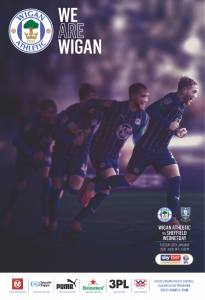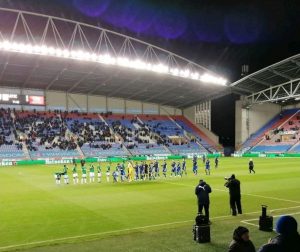Book Review – Fit and Proper People: The Lies and Fall of OWNAFC by Martin Calladine and James Cave
 With the advent of the Premier League in England from the 1992/93 season, football was changed forever. This didn’t just relate to events on the pitch, as overtime players and coaches from abroad came in and brought with them better dietary habits, different training methods and tactical knowhow. Off the pitch with the league awash with Sky’s TV revenue and sponsors willing to be associated with this ‘Whole New Ball Game’, business people from across the globe wanted a piece of the action. Suddenly it wasn’t enough to be a millionaire owner to compete, with the result that now Premier League clubs are the possession of billionaires. As a result many fans more than ever feel distant and without influence from the club they support.
With the advent of the Premier League in England from the 1992/93 season, football was changed forever. This didn’t just relate to events on the pitch, as overtime players and coaches from abroad came in and brought with them better dietary habits, different training methods and tactical knowhow. Off the pitch with the league awash with Sky’s TV revenue and sponsors willing to be associated with this ‘Whole New Ball Game’, business people from across the globe wanted a piece of the action. Suddenly it wasn’t enough to be a millionaire owner to compete, with the result that now Premier League clubs are the possession of billionaires. As a result many fans more than ever feel distant and without influence from the club they support.
And it is against this background that there have been attempts down the years to create a different type of ownership – one where fans own the club, make the decisions, and do the hiring and firing. The first real scheme of this type to hit the headlines saw MyFootballClub (MYFC) launch in 2007 promising on-line fans the chance to “own the club, pick the team”. By 2008 with sufficient interest and financial support MYFC bought a 75% controlling interest in Ebbsfleet United. It was to last until 2013, as with the club in financial trouble the remaining 1,300 MCF members (down from a peak of 32,000) voted in favour of handing two thirds of their shares to the Fleet Trust, and the other third to one of the club’s major shareholders. KEH Sports Ltd, a group of Kuwaiti investors.
In an article in The Guardian in 2017, Will Brook, who was the man behind MYFC, reflected that, “I never want to call it a failure. It had a bit of everything really – positive and negative. But I suppose the fact that it’s not still going means it didn’t achieve its ultimate aim. In some ways I think we might have been ten years too early. Had this been happening now, as a fresh idea, I think we’d have a lot more members simply because of the way social media works.”
Picking up on Brook’s point about MYFC not working partly because of social media limitations at the time, OWNAFC was an app launched in 2019 aimed at capturing on-line fans offering once again the chance to own and run a football club. Hitting the headlines after a BBC Sport on-line article on 28 February 2019, OWNAFC Stuart Harvey acknowledged the MYFC scheme mirroring Brook’s view of two years earlier, “the difference is theirs (MYFC) was 10 years too early. It was before iPhones became popular, before apps, and they were not using the technology we have today.”
Excited by this prospect users paid £99 or a later point £49, with founder Harvey claiming 3,500 sign-ups. However, just 18 days after the launch story by the BBC, the same broadcaster put out an on-line story that many who had invested were asking for refunds. How could such a turnaround occur in such a short space of time?
Martin Calladine and James Cave take on investigating how this happened in their book, Fit and Proper People: The Lies and Fall of OWNAFC. The research carried out by the pair is highly impressive, following the saga from launch to the collapse of OWNAFC, with the failed takeover of Hednesford Town along the way. The pair are single-mindedly tenacious in their attempts to discover the truth about founder Harvey and a scheme which ultimately left many of those that invested out of pocket. The story is more shocking given that both Calladine and Cave and their respective families suffered intimidation in looking to establish the realities of the claims of OWNAFC.
However, the authors also take on a wider remit within the book as they highlight the flimsiness of the Football ‘fit and proper person test’ and look at examples in recent years at clubs such as Bury FC, Chesterfield and Wigan Athletic who have suffered owner mismanagement. As a balance to the sorry tales of mishandling also included is a look at alternative models such as AFC Wimbledon, a supporter-owned club, who have shown there is an alternative in achieving success whilst ensuring engagement with both fans and the local community.
The book is a must read for anyone interested in the running of our National Game, and in truth does not paint a pretty picture of the majority who run it or indeed those who own our Clubs. Calladine and Cave must be commended for their work in the face of intimidation to tell the story of OWNAFC and as they conclude, if at a point down the line there is another way for fans to own a club, that it is done in the right way. Only time will tell.
(Publisher: Pitch Publishing Ltd. January 2022. Paperback: 352 pages)

